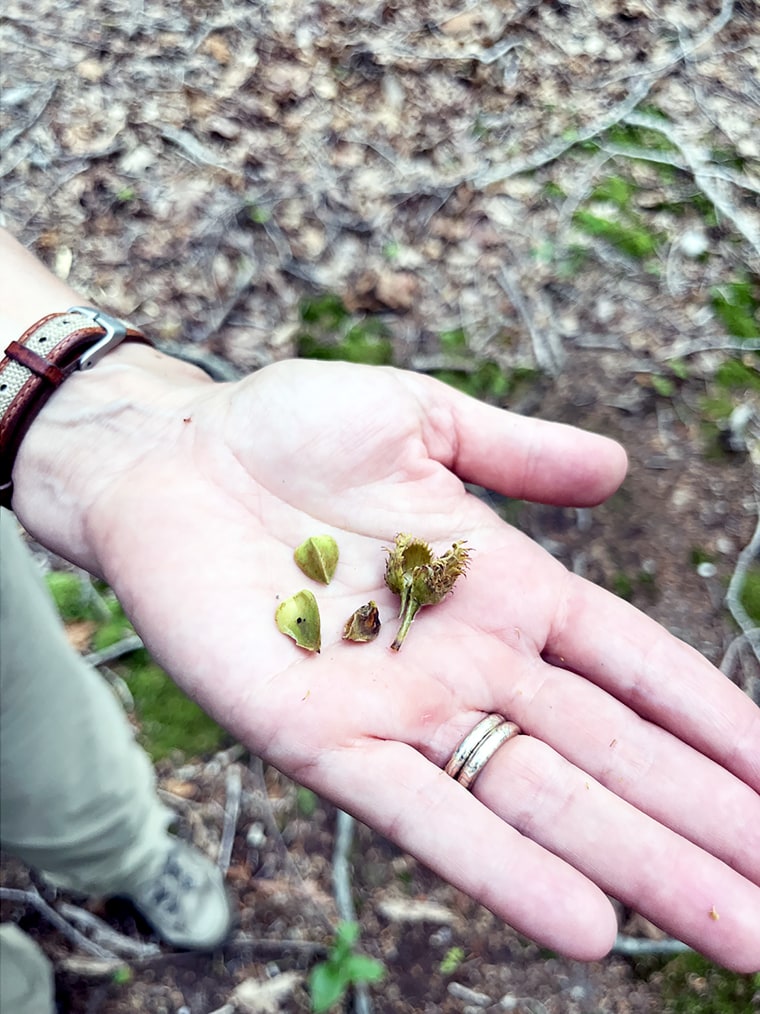But in late 2017, a plant pathologist in Ohio, David McCann, was studying infected beech leaves under a microscope when he saw what he first thought were tiny leaf hairs. Then he noticed that they were moving — a eureka moment.
They were not hairs, but nematodes.
It was, in fact, a new subspecies now known as Litylenchus crenatae mccannii. The last part of the name honors McCann, a former pipefitter who went to college at age 30 and eventually attained a doctorate in plant and soil sciences from West Virginia University.
“I’m just glad I found the problem,” said McCann, who works for the Ohio Department of Agriculture.
But since then, the microscopic menaces have only caused more damage.
Danielle Martin, a forest pathologist for the U.S. Forest Service, said she realized just how devastating the disease can be when she returned to an infected area in Cleveland last summer, three years after first visiting the site.
“It was shocking how much it had advanced within those stands,” she said. “It was just dark, dead forest. I think my jaw dropped.”
The nematodes feast on the buds and leaves of beech trees. As the parasites multiply, the leaves develop dark bands, crinkle and thicken. In time, the buds die and the crown of the beeches thin out, hampering photosynthesis and hastening the trees’ death.
The nematodes have proven both alarming and fascinating to the researchers studying them.
No other leaf-eating nematode is known to infect a large forest tree in North America. The vast majority of nematodes dwell in the soil and attack roots or underground crops such as potatoes and carrots.
Plant pathologists recently discovered another unique characteristic: The beech tree-attacking nematodes cause cellular damage in the trees similar to the effect cancer cells have in mammals, according to a new study led by the U.S. Agriculture Department’s research arm, the Agricultural Research Service.
“This destructiveness and spread is completely new for a leaf-infecting nematode,” said Lisa Castlebury, research leader for the service.
Scientists are still working to answer a host of vexing questions.
Where did the pests come from (researchers suspect Japan)? Are other organisms involved in sickening the trees? And how have the nematodes spread so far so quickly in the U.S.?
One theory being studied is whether they hitch rides on birds or insects.
“The clock ticks rapidly against us given the unprecedented pace at which the nematode spreads,” Kantor said. “Increased funding could expedite our research, and as they say, time is money. In the context of BLD, time is of the essence,” he said, referring to beech leaf disease.
American beech trees grow from Ontario all the way down to Florida, so the disease has the potential to spread much farther.
 Beech tree nuts are a valuable source of nutrition for bears and other animals.Rich Schapiro / NBC News
Beech tree nuts are a valuable source of nutrition for bears and other animals.Rich Schapiro / NBC News
The USDA’s Animal and Plant Health Inspection Service, or APHIS, has allocated more than $108,000 for a research project studying the risks of beech leaf disease in several states.
But it didn’t take more aggressive action because “at the time of its detection, the nematode was determined to be too widespread to establish an effective federal quarantine,” said Stephen Lavallee, national policy manager for APHIS.
“There are many uncertainties related to beech leaf disease and its transmission,” Jo-Ann Bentz-Blanco, director of pest surveillance and emergency management for APHIS, added. “This limits what APHIS can do under the authority of the Plant Protection Act.”

Some plant pathologists said they have no doubt that the disease would be attracting more attention and research money if it were affecting a tree that was more valuable to the timber industry, such as oaks or pines.
But the disease has already cost John Verderber a bundle. He runs Verderber’s Nursery and Garden Center in Riverside, New York, where European beech trees sell for up to $30,000.
The trees have long been sought out by well-heeled homeowners drawn by their beauty and grandeur.
Verderber estimates that the disease has cost him more than $1 million in lost revenue and labor to remove diseased trees.
“If we can’t sell these things, we have to cut them down and spend yet more money to get rid of them,” he said, standing among a plot of infected trees.
“Finding a cure would be wonderful for us nursery guys,” Verderber said.
On a steamy Thursday last month, a handful of plant pathologists and arborists walked from tree to tree at his garden center, inspecting their leaves.
>>> Read full article>>>
Copyright for syndicated content belongs to the linked Source : NBC News – https://www.nbcnews.com/news/forget-lantern-fly-mysterious-new-pest-scientists-sounding-alarm-rcna97555































